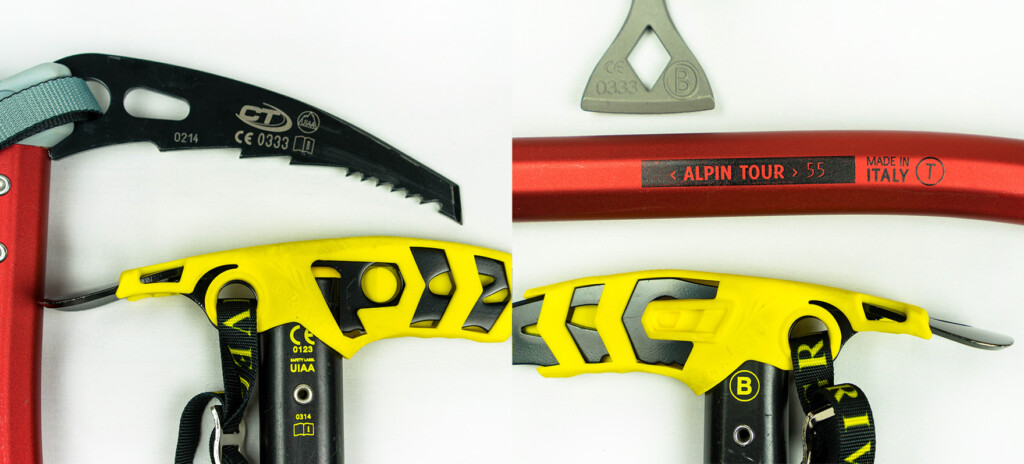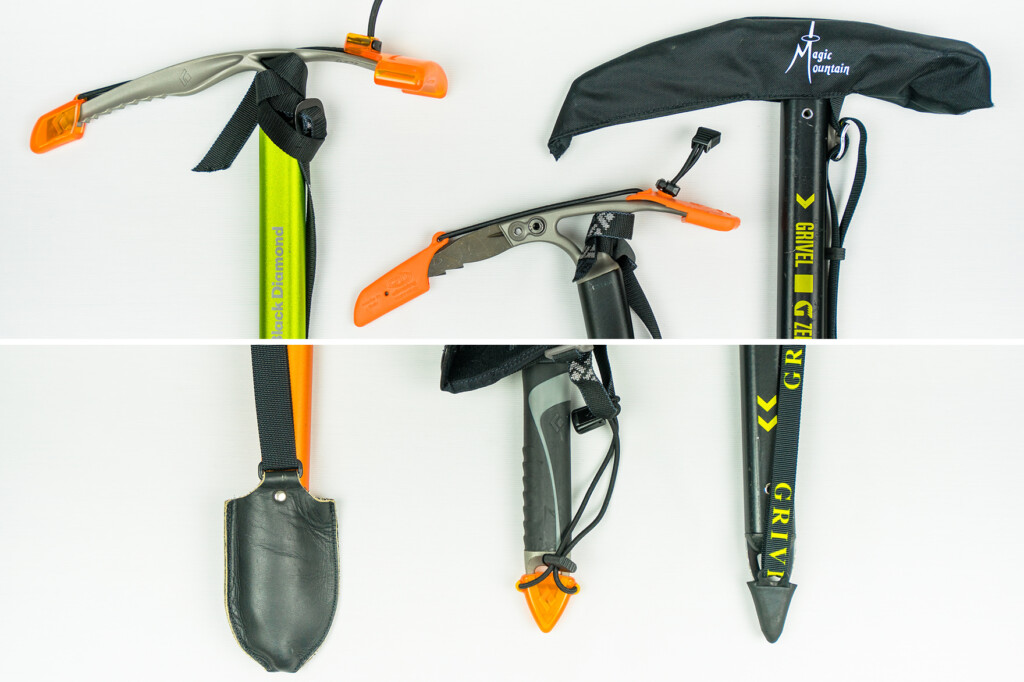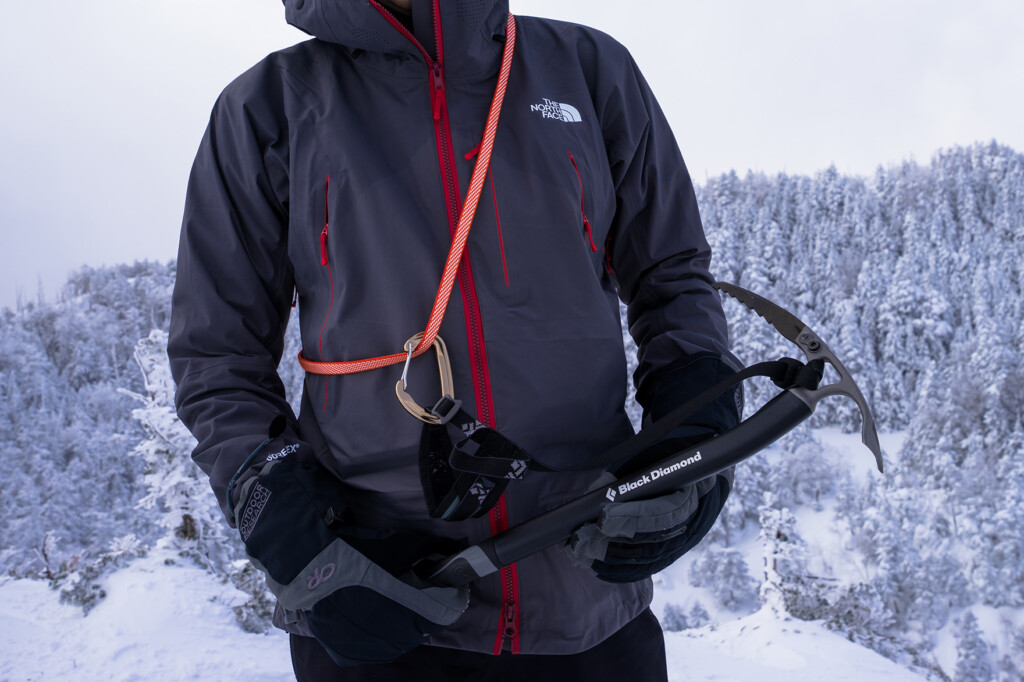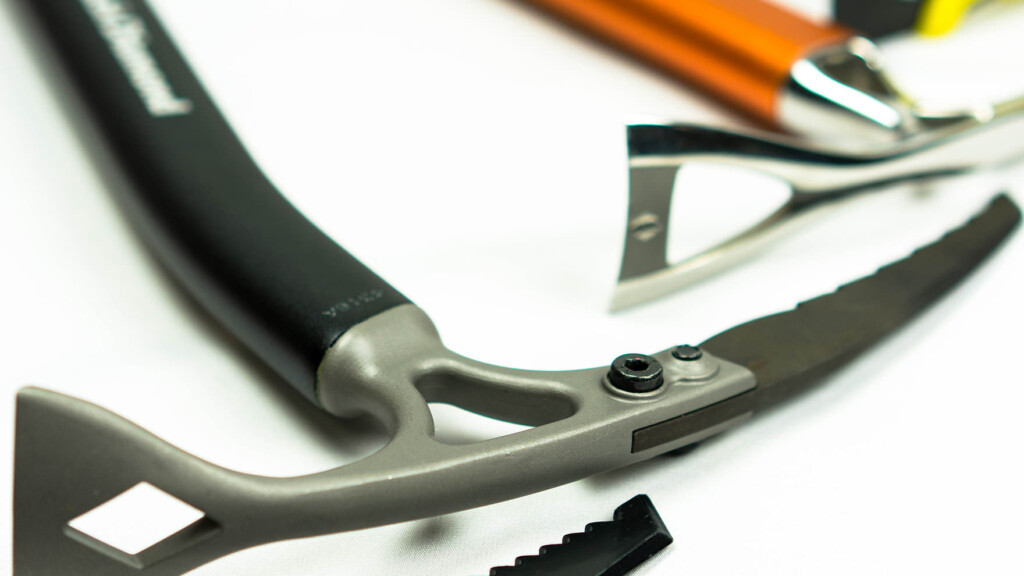
Let's think again about choosing the perfect pickel (ice axe) for snowy mountain walking
table of contents
Point 3: Weight and strength - Choose according to your purpose
Is the lighter the lighter the better? ~About weight~
The general theory of mountaineering is that "lightness is justice," and requires a bit of caution when choosing a pickle. The lightweight pickle, which is made of aluminum, not only the shaft but also the head, is naturally highly portable, making it ideal for activities where speed leads to safety, such as walking in backcountry and snowy fields. However, instead, the lightweight pickel is less strong, and even if you drive it vigorously into the hard, tight ice and snow, the blade may not be at all set. For this reason, light models are dangerous if you are trying to actively drive picks. If you consider a technical route from a typical traverse, it is a good idea to choose a highly durable model with a certain amount of weight.
T type? Type B? ~About strength~
Many of the climbing equipment that entrusts life to you have are global standards for safety (durability), and certification ensures that it is a uniform and reliable product. Pickels are no exception, and tests guarantee that they are stronger than a certain level according to the CEN (European Standardization Commission) standards and the UIAA (International Mountain Federation) standards.
In particular, the CEN standard classifies pickles into the following two strengths depending on the strength. *Quoted from the Petzl Manual
- Type T: For those with high strength, it is a technical axe with the "T" mark. A 50 cm shaft must withstand a load of 3.5 kN. Petzl Charle's technical axes are designed to withstand up to 4 kN.
- Type B: The axes with the "B" mark are basic axes, and are less strong than technical axes. A 50 cm shaft must withstand a load of 2.5 kN.
In short, Type B is mainly used to maintain balance when walking and stop slipping on slopes, while Type T is strong enough to anchor or belay when climbing, assuming more impacts than the load that puts your entire weight on.
The strength is outstanding, but it is difficult to imagine scenes where a typical snowy mountain climbing is subject to a very high load, so type B is sufficient. At the very least, you should be sure whether they have passed certifications such as CEN standards. Rather, you should be concerned about the risk that the increased strength will lead to heavy models being unnecessary, making it difficult to operate. Of course, if you're looking to go into a full-scale winter mountain, it's quite a good idea to choose the T-type from the beginning.
Tips for choosing:
- If you are considering a route with a strong climbing element in the future, you should not go for an extremely lightweight model.
- As long as the strength of the pickle is certified by international standards such as CEN, the basic level (B) level is sufficient.
Point 4: Ease of use - Don't take it lightly
It may be a small detail, but one thing you should never forget is the ease of use of the pickel. The head shaft part, which you are constantly holding, is an important point in terms of how quickly and safely you can handle it when changing the way you hold it. Furthermore, speed is the key to stopping a slippage, so even just a little easier to handle cannot be said to be the difference between life and death.
These may not be a concern for people with normal or larger sizes, but for people with smaller hands or women, they may be significantly different than others. By the way, from experience, if the grip is too large and feels like it is squeezing your fingers, it may cause poor blood circulation later, and your hands tend to get colder.
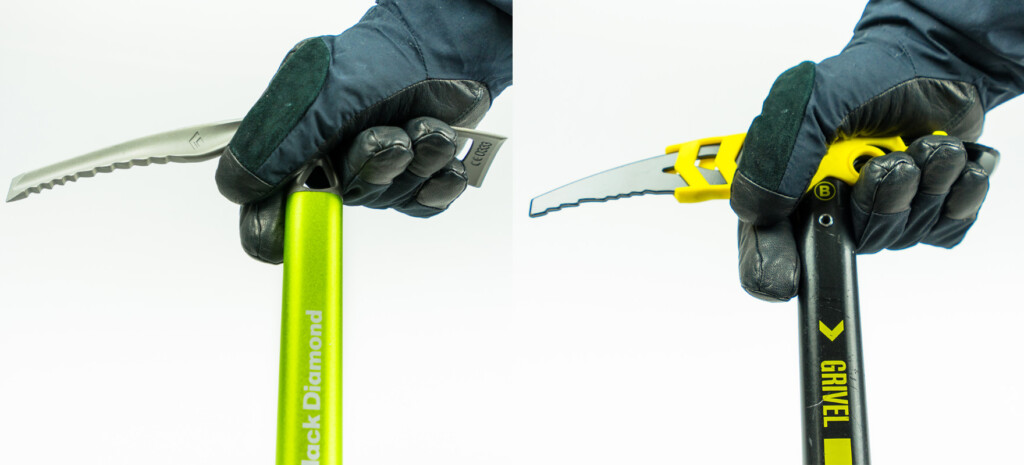
Black Diamond Raven (left) has a slim head that makes it easy to grip, and Grivel G Zero with head protector to prevent cold hands.
Tips for choosing:
- When purchasing, be aware , such as the ease of gripping the head, moderate slippage, and the like
Point 5: Others - Accessories that you should prepare
cover
Pick Blade Spitze is sharper than you imagined, and it is extremely dangerous to wander around the bottom with its bare surface and makes it a great weapon against people. Also, if you handle the item without covering it carelessly, there are probably quite a few people who have experienced the sudden moments of lifting and lowering a backpack, or even squealing it as if it were a sloppy thing. You can buy a commercially available cover, make your own cylindrical cover, or wrap duct tape to make it a cover. Make sure to attach a cover, even if you use any method.
Leash (Pickel Band)
A leash is a band that connects you to the pickel. It is designed to keep the pickle constantly connected to yourself so that you don't let your guard down in any situation, as well as slopes where you can't know when it will fall. It can also be used to ensure safety by embedding the shaft in the snow to serve as an anchor when resting on a slope. It is wise to wear it unless you are at the level of an extremely skilled professional guide.
leashes : shoulder-on-wear and wrist-on-wear we will introduce composite type that the instructor taught us
The composite type is a method of using a 60cm tape sling over the shoulder, carabiner, and a wrist leash is connected to it. It is an excellent product that can be used in both ways, usually as a shoulder strap type, and as a wrist-type detachable from the carabiner when climbing.
| Types of leashes | Shoulder type | List type | Composite type |
|---|---|---|---|
| advantage |
|
|
|
| Disadvantages |
|
|
summary
To put it simply, after writing so much at this point, I have experienced that, as far as I have mentioned, whether it is straight or bent, or whether it is a few centimeters long (short) is concerned, is not a fatal issue. What's even more important is how freely you can handle the tools you have been given (selected). In other words, once you decide to do this, the most important thing is to first master how to use the model so that it can be treated like a part of your body. Taking into account what's written here, to be honest, it's best to start by picking up something affordable or something that you find easy to use, without worrying about too much detail. I'll also be looking at some recommended models later.
Finally, just to be safe, even if you go that far, due to the basic nature of mountain tools, the conclusions written here do not apply to everyone in all situations. I have tried to focus on my thinking as much as possible, but I would like to never try to take just the conclusions I have written at face value. Snowy mountains in particular are dangerous activities that can be life-or-death if you climb with half-hearted knowledge and skills, so if you are actually trying to start a winter mountain, we recommend that you always be accompanied and guided by a group with a proven track record, such as mountain clubs, or experienced people.
[References]
- "Mountains and Valleys, May Issue," Yamato and Valleys, 1965
- Takahashi Kazuyuki, "Research on mountain climbing equipment: Full knowledge of how to choose, buy, and use," Uni Publishing, 1979
- Hashitani Akira, "Choosing mountain tools without fail," Yama to Keikokusha, 1989
- Hotta Hiroshi, "Challenge to the Mountains: Mountain Climbing Equipment Talks," Iwanami Shinsho, 1990
- "Mountains and Valleys April Issue" Yamato and Valleys Publishing, 1990
- "Snow Mountain Climbing (Yamakei Technical Book - Complete Guide to Mountain Climbing Techniques)" Yama to Keikokusha, 2006
- "The Complete Collection of Mountain Equipment" Yama and Keikokusha, 2010
- Kasahara Yoshiki, "Experienced Mountain Tools Study," Yamakei Shinsho, 2014
- "Peaks: Latest Snow Mountain Gear Guide" Ei Publishing, 2015
- "Trampin vol.25 Introduction to Snow Mountains (CHIKYU-MARU MOOK)" by Tetsumaru, 2015


